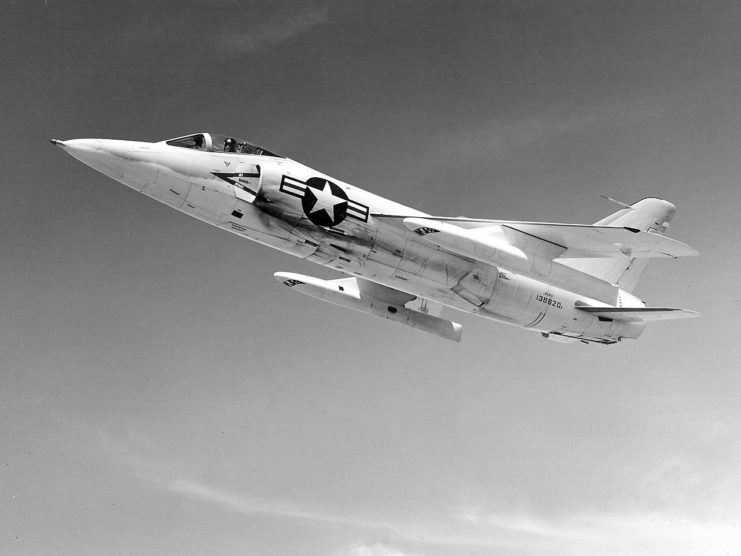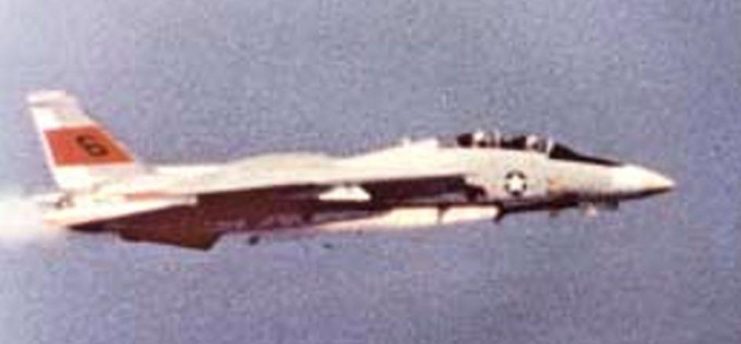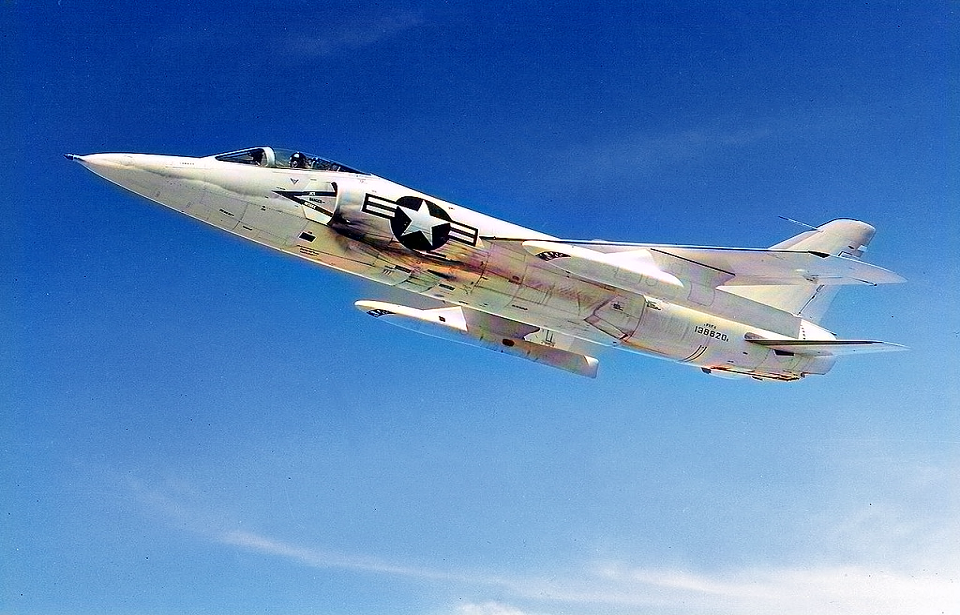As a rule, most aircraft armed with offensive weapons either attack ground targets or other aircraft. Over the past century, we have gotten pretty good at this, with bombs that can be forgotten about after release and missiles that can bring down satellites orbiting the planet. Today shooting down an enemy aircraft remains a complex task, but on a few occasions some US planes have actually shot themselves down – by accident, of course.
Since the early days of the Cold War, aircraft have mostly relied on machine guns or cannons and missiles to engage enemy aircraft. However, these weapons have been known to be a danger to their own aircraft.
F11F Tiger shoots itself down in 1956

The Grumman F11F Tiger was a carrier-based fighter developed for the US Navy in the 1950s. The project was originally intended to be a simple modernization of Grumman’s F9F Cougar, but with the rapid pace of jet development at the time it slowly evolved into an entirely new aircraft with few similarities to its predecessor.
For offense, the Tiger carried four 20 mm Colt Mk 12 cannons mounted near the aircraft’s air intakes. On one test flight in 1956, a Tiger managed to shoot itself down with these cannons.
A test flight on September 21 1956 flown by Grumman test pilot Tom Attridge included test firing of the cannons at high speeds. Attridge was to take the aircraft up to an altitude of 22,000 feet to begin the test. Once there, he would descend at a 20-degree angle with afterburners until he reached Mach 1. When he passed through 13,000 feet he’d fire the cannons for four seconds, let them cool for three seconds and then fire another burst.
The test would in theory end at 7,000 feet with all of the ammunition being expended.
While carrying out this flight profile, Attridge’s aircraft was suddenly struck by an unknown object that shattered his armored windscreen. Instantly he throttled back and started gaining altitude. At the moment all Attridge could see was damage to the air intake. The engine was down on power and eventually stopped producing power entirely, causing the aircraft to quickly lose altitude until it crash-landed around 1,000 meters from the runway.
Fortunately, Attridge survived the ordeal without any injuries. Incredibly, an inspection of the aircraft showed that it had been hit by three 20 mm rounds.
Subsequent investigations revealed that after firing his first cannon burst of the test flight, Attridge’s descent actually passed underneath the path of the cannon rounds. As he pulled out of the dive, the rounds stuck his aircraft. Therefore, Attridge shot himself down.
F-14 Tomcat struck by its own missile fragments

The F-14 Tomcat, another Navy (and Grumman) aircraft, is one of the greatest fighters ever made. Upon its introduction in the early 1970s, its tremendously powerful weapons systems made it one of the most capable aircraft on the planet. The Tomcat was designed with the lessons learned during the Vietnam War in mind and could carry three different types of air-to-air missiles.
One of these was the AIM-7 Sparrow, a tried and tested a medium-range missile that has been in service since the 1950s. When launched, the Sparrow was guided by the Tomcat’s powerful onboard radar, allowing it to hit targets beyond visual range.
On June 20 1973 test pilots Pete Purvis and Bill Sherman were conducting a missile test over the Pacific Missile Test Range just off of southern California. An AIM-7 Sparrow was to be launched as part of the test, but issues with the missile itself – it was a commonplace weapon by this point – were unexpected.

Unlike many other missiles, which ignite their motors almost as soon as they are fired, the Sparrow missile drops away from the launch aircraft before its rocket motor fired up.
When Purvis and Sherman fired the missile on the test flight, it made a much louder noise than usual as it detached from the aircraft. Normally, the missile will then shoot off at high speed from underneath the aircraft towards its target, but on this occasion, the two pilots witnessed the missile tumble out in front of their F-14.
The flaming missile spewed out pieces of itself, which were ingested by one of the Tomcat’s engines. The engine burst into flames, and the two men ejected safely. The F-14 was destroyed.
